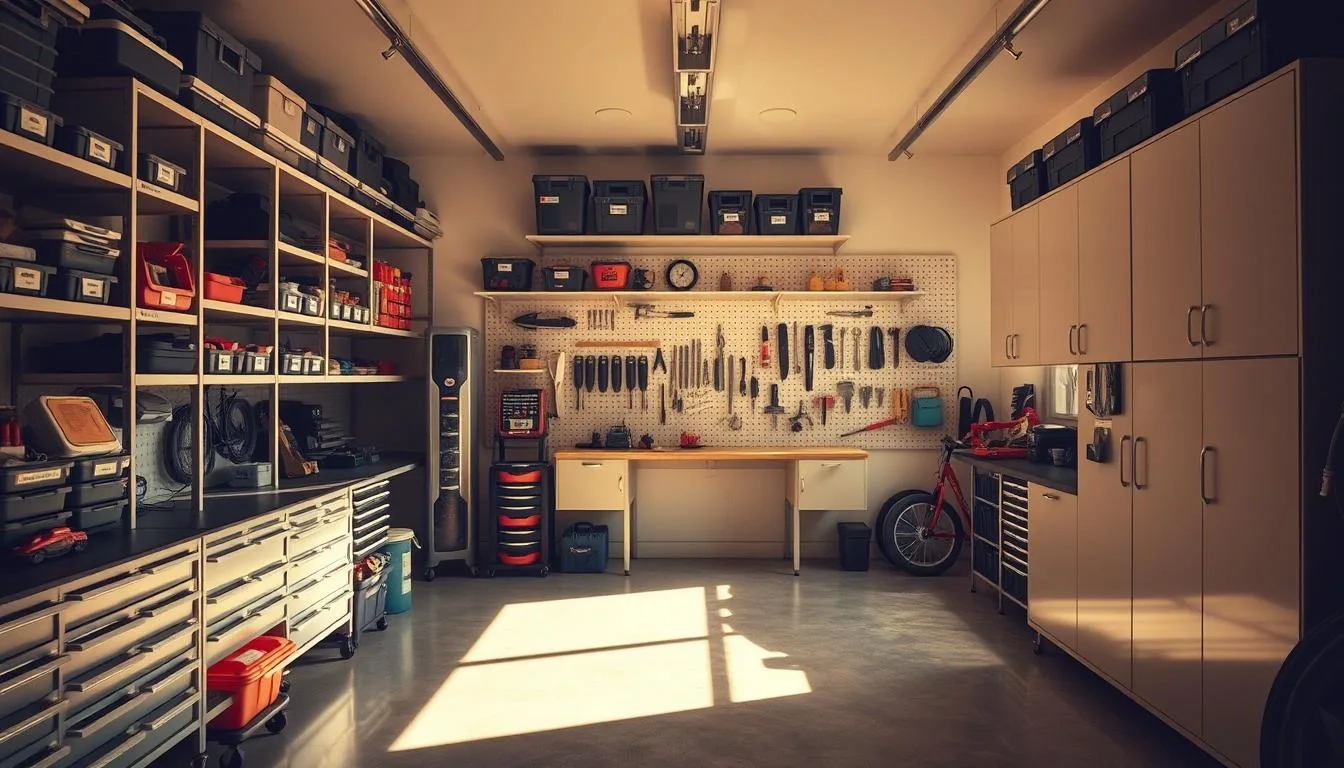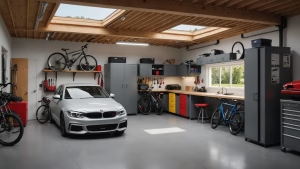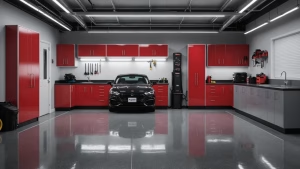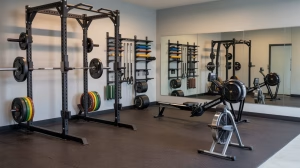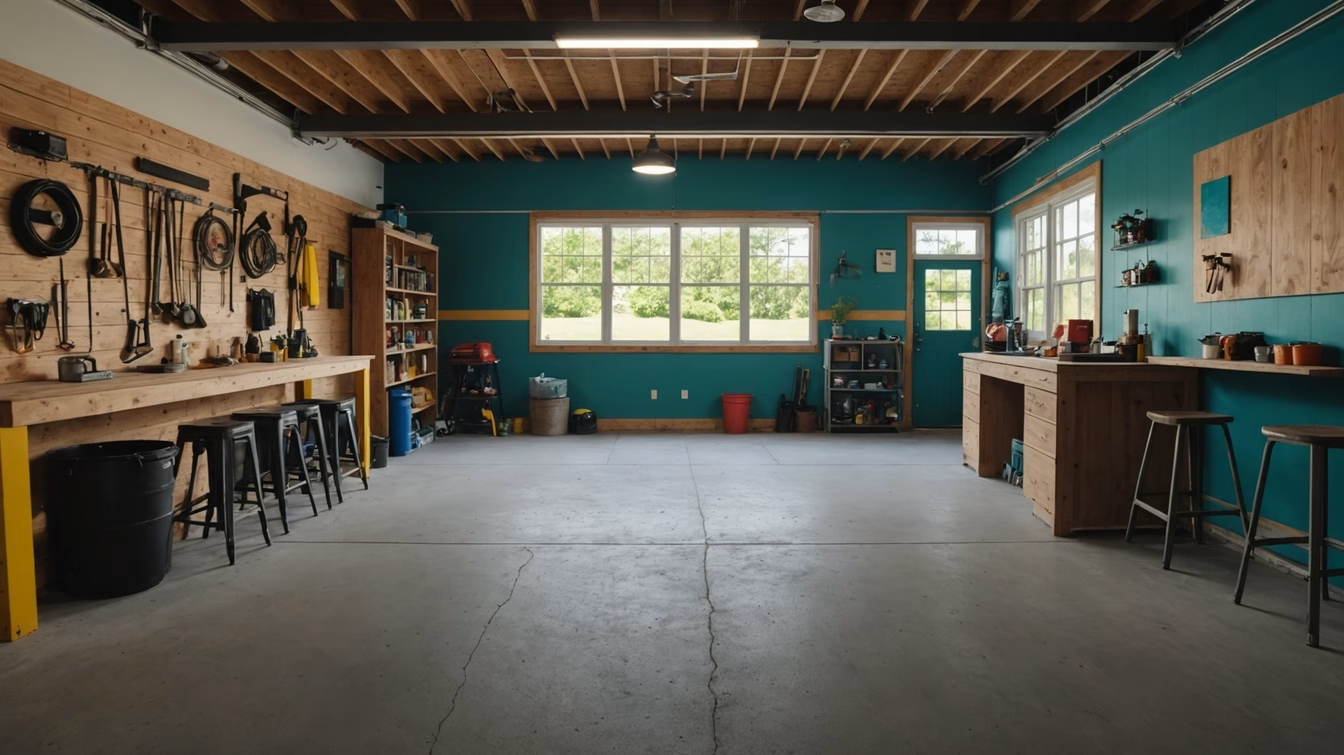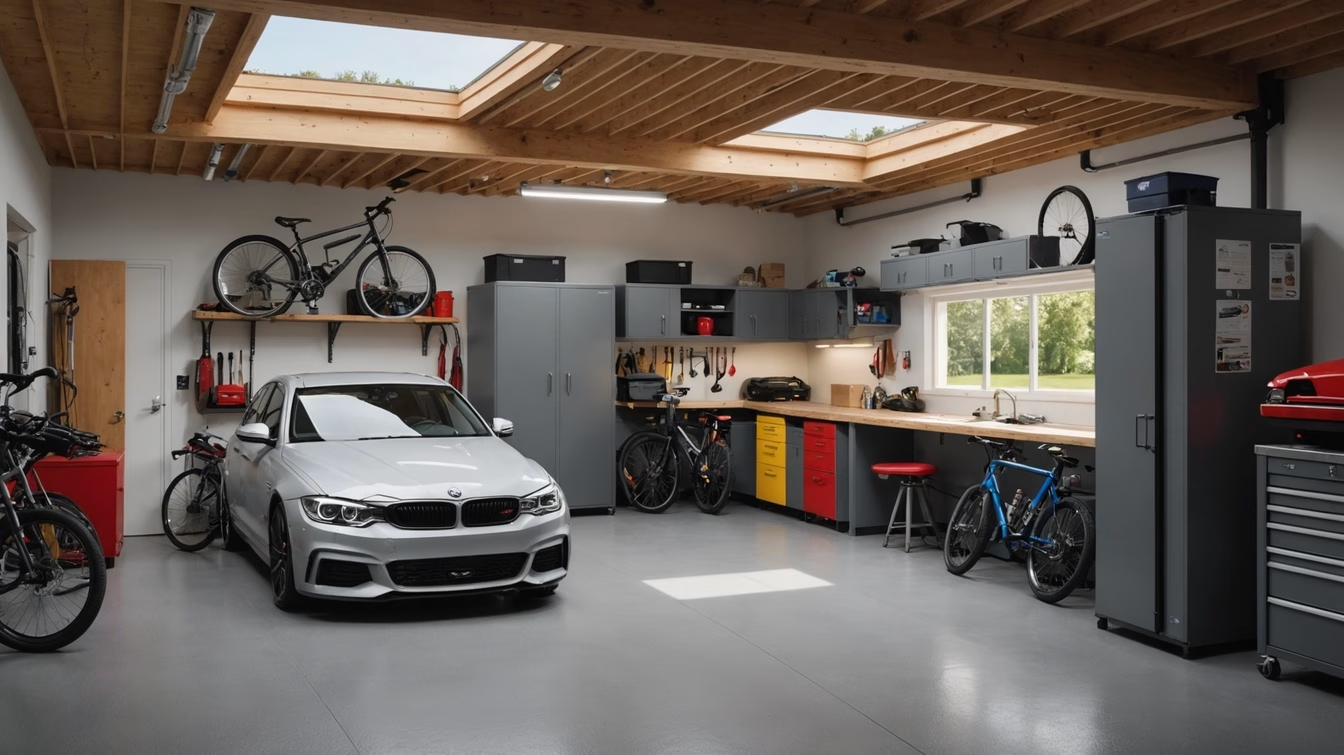Americans own more than any society in history, yet 25% of two-car garages can’t fit a car due to clutter. Imagine a space meant for vehicles buried under forgotten toys, unused tools, and boxed items. The average U.S. home is 35% larger than in 1974, yet clutter prevails. This isn’t just about storage—it’s a mental burden.
Studies show visual clutter raises stress, making even simple tasks feel heavier. The garage, once a utility hub, often becomes a dumping ground for decades of accumulation.
Psychologically, cluttered spaces drain focus. Hidden tools lead to duplicate purchases, wasting time and money. While 40% of global toy sales flood U.S. homes, adding to the chaos. Garage organization ideas aren’t just practical—they’re a mental reset.
DIY garage organization can transform wasted space into functional zones. This journey starts with understanding why clutter lingers and ends with reclaiming order. Let’s explore how garage organization isn’t just tidying; it’s a path to a calmer, more efficient home.
Understanding the Impact of a Cluttered Garage
Clutter in the garage does more than just block pathways—it affects mental health. Studies show a cluttered garage increases stress hormones like cortisol, making it harder to relax. Researchers from the National Library of Medicine found physical clutter competes for attention, slowing focus and raising anxiety. Over 80% of homeowners report stress from cluttered living spaces, including garages. The constant visual noise of piled tools or forgotten items creates a low-grade mental strain, worsening sleep and productivity.
Disorganization also costs time and money. Homeowners waste 55 minutes weekly searching for misplaced items. Duplicates bought because items vanish in clutter add financial strain. Safety risks rise too: 30% of home accidents occur in cluttered areas, risking family safety.
Garage organization transforms these issues. Vertical storage solutions like SlatWall systems or overhead racks free floor space, cutting search time. Clear labeled bins, such as those from the Waste Management Bagster Bag, simplify decluttering. Professional systems like the CGS Polyaspartic Flooring System enhance safety and ease cleaning. These garage storage solutions reduce stress by 40% and boost property value up to 10%. Prioritizing garage organization isn’t just practical—it’s a mental and financial investment.
My Personal Journey to Garage Organization
My garage transformation started with a candid assessment of the chaos. Tangled tools, heaps of sports gear, and seasonal items buried under debris were the norm. After decades of disarray, the 2.5-car space couldn’t even fit two cars. The initial step was to clear out clutter—donating 80% of stored items to Habitat for Humanity Restore. This revealed hidden dangers like outdated chemicals and misplaced tools.
Vertical storage became my go-to strategy. I installed Gladiator track systems and BOAXEL pegboards to reclaim floor space. Magnetic bowls and overhead racks were used for small items. Hockey gear and fishing tackle found new homes on wall hooks and labeled bins. Painting the walls with Behr Marquee Silver City paint made the space feel lighter. Stackable bins and clear containers kept seasonal items visible but out of the way.
I tackled the project in weekly segments, focusing on one zone at a time. After eight hours of focused effort, the garage could hold two cars, a freezer, and a refrigerator. Pegboard tool organizers now keep cleaning supplies within reach, while carabiner hooks suspend frequently used items. Celebrating small victories, like finding a place for holiday decorations without digging through boxes, was key.
Today, the garage serves as both a workshop and storage space. Vertical shelving around obstacles maximized every inch. By combining DIY garage organization tips with practical tools, I transformed chaos into a functional space. The journey showed me that organization is a continuous process, not a one-day fix.
Essential Tools for Effective Garage Organization
Enhance your garage’s functionality with organizing tools for garage tailored to your requirements. The Fleximounts GR48H overhead rack, crafted from heavy-duty steel, introduces vertical storage without compromising on durability. Its adjustable nature conserves floor space, perfect for garages with elevated ceilings. Combine this with garage storage cabinets like Gladiator’s Heavy-Duty Rack, which supports up to 2,000 lbs per shelf, ensuring heavy items remain secure. Best garage organization products like these blend robustness with flexibility to conquer clutter.
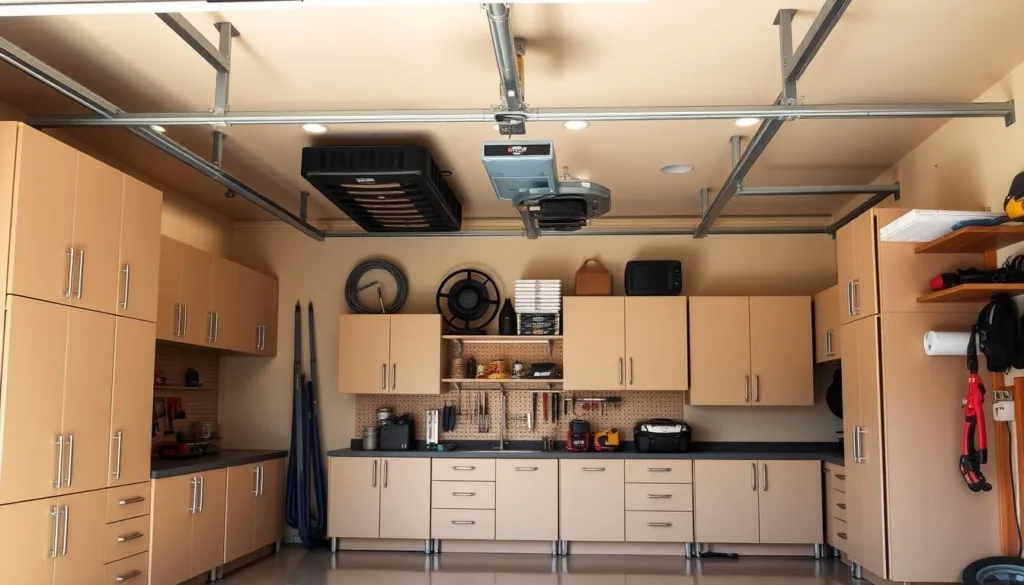
Utilize vertical spaces with solutions like slatted wall panels or wire shelving under joists. Pegboards and hooks keep tools at hand, while clear plastic bins with labels simplify small-item storage. Modular systems, such as slatwall panels, enable you to reorganize layouts as your needs evolve. For example, constructing a ball corral or custom shelves using 3/4-inch plywood and 2x2s can be achieved for under $250, demonstrating that quality doesn’t have to be expensive.
Labeling systems are critical. Labeled bins and zones can reduce search time by up to 40%, as studies indicate. Overhead racks like the Saris Cycle Glide free up floor space for vehicles, while corner shelves increase usable area by 15%. Investing in best garage organization products not only organizes but also enhances home value by 5-10%. Focus on adjustable shelving and durable materials for longevity—many systems endure for 15+ years. Begin with zones for tools, seasonal items, and vehicles, then fill in gaps with cabinets or wall-mounted hooks. Every dollar invested in proper storage saves time and reduces stress, creating a space that evolves with your needs.
Creating Zones for Better Functionality
Effective garage organization starts with dividing the space into zones based on use. A well-planned layout groups tools, sports gear, and seasonal items together. This reduces the time spent searching for things. For example, a workbench zone with drawers and a sturdy surface keeps projects organized.
Mapping these zones first ensures every corner serves a purpose. This approach maximizes the garage’s functionality.
Vertical space is key to maximizing storage. Garage shelving systems like Flowall’s wall-mounted racks use walls and ceilings, freeing up floor space. Installing 12”-deep hooks near the garage door keeps garden tools accessible.
Clear bins for seasonal items let you see contents at a glance. 23”-deep cabinets store bikes or sports equipment. Safety is a priority—keep hazardous materials high and cords secured to avoid trips.
Regular monthly checks help maintain zones. Designate a “donation area” for unused items and return tools to their spots daily. A 22’x22’ garage can gain up to 50% more usable space with smart zoning.
By following these strategies, homeowners turn chaotic spaces into functional areas. This saves time and reduces stress.
The Time Investment: How Long Does Organizing Take?
Garage organization is not a quick task. J.D. Roth’s journey illustrates it’s a slow process. A 3-car garage might need 16-24 hours over a weekend for a deep clean. Smaller spaces could finish quicker, but the amount of clutter plays a role.
Begin by sorting items into keep, donate, or discard piles. This initial step alone could take 2-4 hours, depending on the volume.
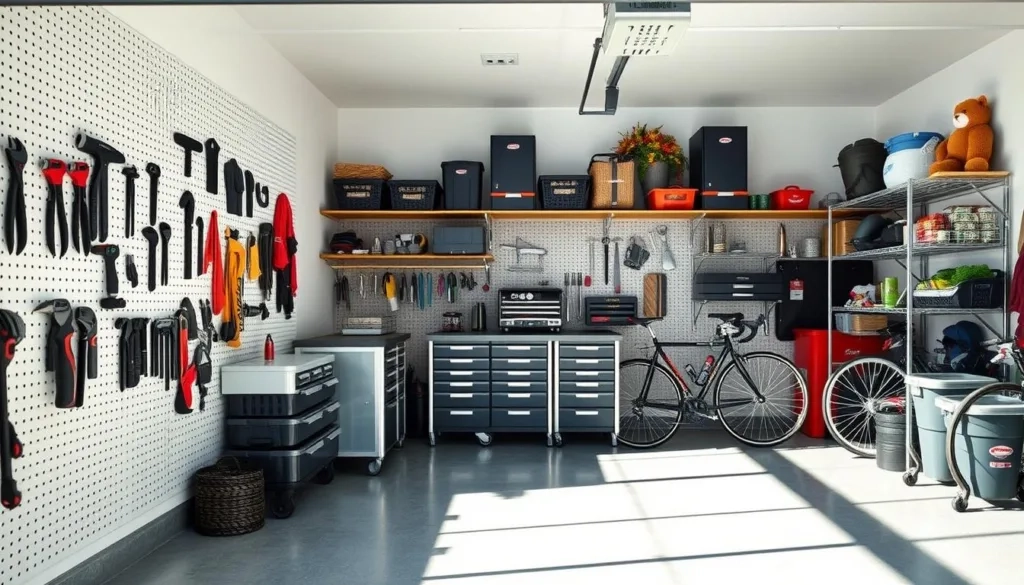
Effective garage organization strategies include planning zones first. Categorize items before purchasing storage solutions. This approach saves time later. Vertical storage, like overhead racks, can increase space by 50%, but installation requires extra time.
Labeling bins with large text can reduce search time by 40%. Iris Weathertight Storage Bins, for example, offer stackable designs and clear labels, simplifying this step.
Maintenance is key. Allocate 2-4 hours every 3-6 months to maintain order. Regular checks, every quarter, prevent clutter from returning. Even 30-minute daily sessions can contribute to keeping the garage organized.
Donating unused items first can save up to 25% of effort in the long run. Clearing these items first streamlines the process.
Time saved adds up. A tidy garage can cut search time by 30%, making daily tasks more efficient. Prioritize frequently used items at eye level. This “prime real estate” approach boosts efficiency. Remember, small steps matter. Tackling one zone weekly keeps the task manageable without overwhelming schedules.
Strategies for Decluttering with Ease
Decluttering a garage is more than just moving boxes around. Begin by categorizing items into four groups: keep, donate, sell, or trash. This method simplifies decision-making and prevents feelings of overwhelm. Jamie Hord, a renowned organizer, suggests clearing everything to reveal hidden spaces and avoid unnecessary expenses from duplicate purchases.
Most people only use 20% of their stored items regularly. Applying the Pareto Principle helps focus on what’s truly important. Keep only essential tools, seasonal decorations, or items you use often. Discard duplicates, such as old technology or unused appliances.
Emotional attachments can hinder progress. Sentimental items or the fear of future use can slow you down. Acknowledge sunk costs—keeping unused gifts or broken gadgets rarely benefits you. Letting go of these items frees up space for what you need now, aligning with your goals for garage organization.
Experts like Tracy McCubbin suggest decluttering annually to maintain progress. Working with family members can make handling heavy items easier and more efficient. Start by clearing the floor to ensure safety and uncover hidden clutter. Then, use overhead racks or vertical shelving to make the most of unused ceiling space, a key to effective garage organization.
Maintenance Strategies for a Lasting Organization
Organizing a garage is not a one-time task. Over 36% of Americans face parking challenges due to clutter. Regular maintenance is essential to avoid this. Adopting daily habits, like the “one-minute put-away rule,” can significantly help. Use organizing tools for garage, such as hooks or wall-mounted shelves, to return tools or equipment to their spots immediately. These small actions can prevent clutter from building up.
Seasonal reviews are critical. Every quarter, evaluate the items stored in your garage. Discard items that have not been used in two years. Utilize checklists to sort through seasonal decorations or holiday gear. Vertical garage storage solutions, like overhead racks or stackable containers, help maximize space during these reviews. Garages that hold 40% seasonal items often see a significant reduction in clutter through this approach.
Be prepared to adapt as your needs evolve. Growing families or new hobbies may necessitate changes in your storage layout. Adjustable shelving or modular containers offer the flexibility needed for these changes. For instance, transforming unused corners into workstations with lockers adds functionality. Regular audits ensure that your systems remain relevant, preventing the accumulation of 20-30% unused items.
Psychologically Beneficial Aspects of an Organized Garage
Garage organization transcends mere tidiness; it nurtures mental health. Cluttered spaces are linked to increased stress levels. In contrast, organizing items in garage storage cabinets or designated zones promotes calmness. USU Extension highlights that decluttering can significantly reduce anxiety, transforming it into a peaceful retreat from daily turmoil.
Completing garage organization boosts self-esteem. The Space Defined emphasizes how mastering this task enhances confidence, motivating individuals to tackle other projects. Systems like overhead racks or labeled bins simplify spaces, reducing decision fatigue. Fleximounts notes that a streamlined garage enhances mental clarity, sharpening focus on priorities.
Organized garages serve as havens of peace. Premier Garage points out that maintaining order in this area elevates the home atmosphere, reducing family tensions. Sunlit shelves and tidy corners serve as daily reminders of control over one’s environment. Even simple activities like tool maintenance can become meditative, easing stress.
Practical benefits merge with mental health advantages. Clear pathways and secure storage reduce accident risks, lowering worry. Donating excess items adds purpose, aligning actions with values. Over time, these small victories build resilience against life’s pressures. An orderly garage becomes a cornerstone for broader self-improvement, proving small spaces hold immense well-being value.
Encouraging Family Involvement in Organizing
Family teamwork is key to successful garage projects. UCLA research highlights how clutter spreads due to shared habits, like toys piling up. By using DIY garage organization strategies together, success rates soar by 70% compared to solo efforts. Assign tasks based on age and skills to maximize efficiency—teens can sort tools, while younger kids match labels to bins.
Brands like Overstock offer affordable storage totes, while The Home Depot provides sturdy shelving from their best garage organization products line. This ensures everyone has a role in the process.
Weekly 15-minute cleanup sessions keep everyone on track. Make maintenance fun by turning it into a game—time tool-finding races or reward the fastest declutterer. Labeling systems, like those from Command brand, cut search time by 30%, easing daily stress. Setting clear goals boosts completion rates, with 80% of families meeting deadlines when using shared calendars.
Involving all members builds pride in the space. Shared efforts reduce clutter-related anxiety, freeing up 30% more usable space. When every family member contributes, garages stay organized—and so do households.

